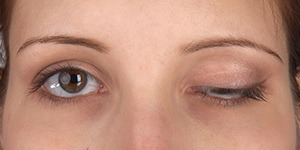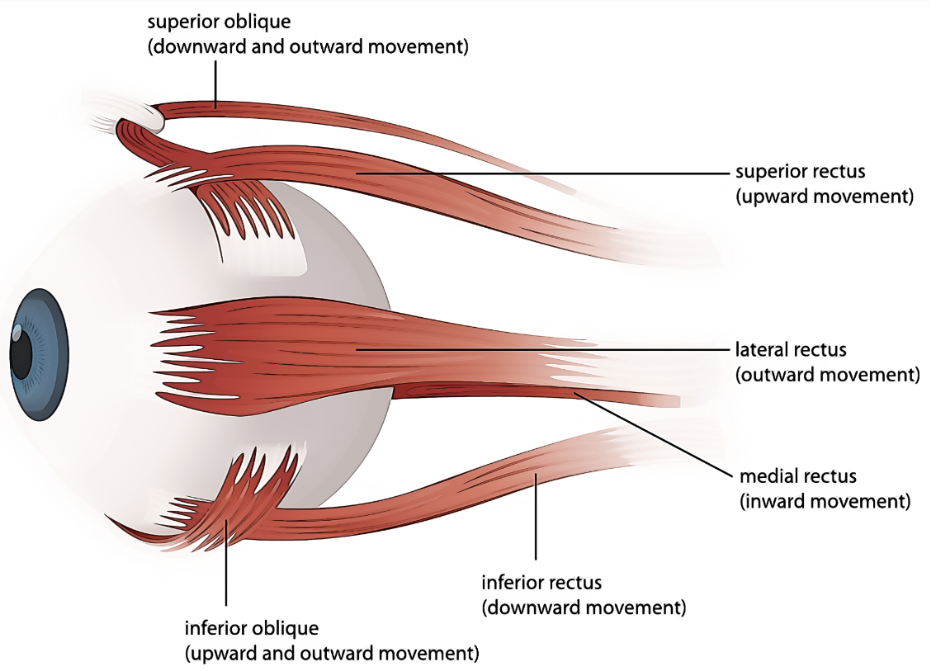Overview
Ptosis (pronounced toe-sis) is the medical term for drooping of the upper eyelid(s). This lowering of the upper eyelid margin may obstruct the patient’s vision when the eyelid either partially or completely obstructs the pupil. Patients with ptosis often compensate for this obstruction by using their forehead muscles to raise the drooping eyelids (so called frontalis overaction). In severe cases, people with ptosis may need to lift their eyelids with their fingers in order to see. Children with ptosis may develop amblyopia (“lazy eye”) or developmental delay from limitation of their vision.

Causes
There are many causes of ptosis, and ptosis can be congenital or acquired.
Congenital ptosis
This means that the patient is born with a droopy lid and this can have genetic origins.
Acquired ptosis
This is ptosis that occurs later on in life, can be due to age-related weakening of the muscle that lifts the eyelid, eyelid trauma, or sometimes even neurologic disease. As we age, the aponeurosis/tendon that attaches the levator muscle (the major muscle that lifts the eyelid) can stretch and cause the eyelid to fall. This represents the most common cause of a droopy eyelid. Ptosis may also occur following any eye surgery due to stretching of the same tendon by the use of lid instruments. Chronic eye rubbing and the use of rigid gas-permeable (RGP) contact lenses may also stretch the tendon and cause ptosis over time.
Neurologic disease such as strokes, brain tumors and even lung tumors affecting the top part of the lung (the apex) can lead to weakening of the nerves that supply the eyelid muscle. It is important to note that if there is an enlarged pupil on the same side as the ptosis, then there is an urgent need to exclude life-threatening conditions like aneurysms or tumors that are pressing on the third cranial nerve in the brain and causing the ptosis. In such cases, an urgent brain scan is warranted as the aneurysm may burst and lead to undesirable consequences

Myasthenia Gravis is an autoimmune condition affecting the nerve-muscle junction, and this leads to weakening of the eyelid lifting muscle with prolonged use. Typically, patients will complain of ptosis that worsens as the day goes on and when they are tired. Upon resting and on waking up, the ptosis is better or even absent! They may also have other complaints like double vision or weakness affecting other muscles in the body.
Less commonly, tumors or inflammation can affect the eyelids and the lids may swell up and droop (so-called mechanical ptosis).
How does Ptosis affect my vision?
Ptosis affects vision only if it covers part or all of the pupil (the opening in the iris that allows light to enter the eye). Ptosis can also cause some degree of astigmatism as the abnormally positioned eyelid can press on the cornea and affect its shape.
Management of Ptosis
It is important to determine the cause of ptosis first from a careful history and clinical examination. Some causes such as Myasthenia Gravis (MG) are treated with medication, while some are best treated by surgery. Failure to determine the cause may lead to unnecessary surgery or poor surgical results, with the lid drooping again after a period of time.
Depending on the clinical history, the doctor may order blood tests to look for auto-antibodies (in MG), screen for health problems like diabetes, high blood pressure or high cholesterol, perform nerve conduction studies or sometimes brain scans and X-rays.
For cases requiring surgery, this usually involves tightening the levator muscle to elevate the eyelid. In severe ptosis, when the levator muscle is extremely weak, a “sling” operation may be performed, enabling the forehead muscles to elevate the eyelid(s). Other types of repair may include surgery on the smaller muscle on the inside of the lid in cases of mild ptosis. The surgeon will perform testing determine the best form of correction for the individual patient. The goal is to elevate the eyelid to permit a full field of vision and to achieve symmetry with the opposite upper eyelid for good cosmetic outcome.
